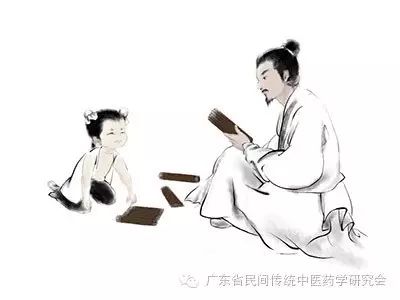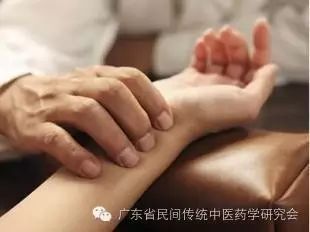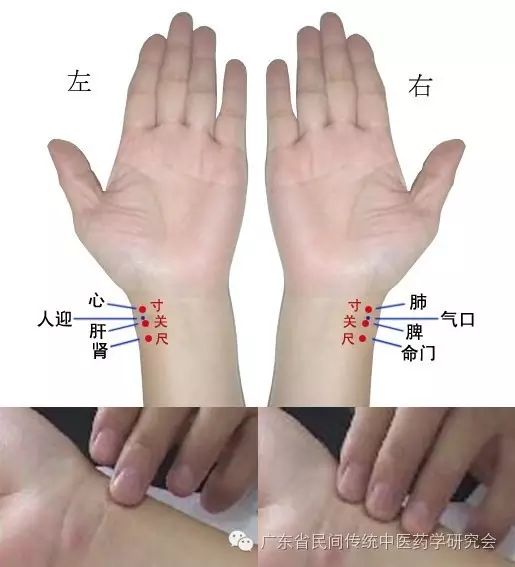Traditional Chinese Pulse Diagnosis
is developed under the guidance of various theories such as Yin-Yang theory, Zang-Fu theory, Qi and Blood theory, and Meridian theory, containing rich cultural connotations and professional knowledge.
Floating Pulse
Li Shizhen’s “Binhuhuaixue” on Floating Pulse
【Body Condition Poem】The floating pulse only travels above the flesh, like following the elm pods, light as hair; in the autumn, it indicates no illness, but if encountered in a long-term illness, it can be alarming.
【Similar Condition Poem】Floating like wood floating in water, floating large and hollow is the Kuao pulse; if it floats and bounces, it is the Hong pulse, though it comes strong, it goes slowly.
The Kuao pulse is light and flat like twisting scallions, weak and slow, large and empty; floating and soft is the Ru pulse, scattered like willow catkins with no fixed trace.
【Main Disease Poem】The floating pulse indicates a Yang exterior disease, slow wind, several heat, tight cold restraint; floating and strong indicates much wind-heat, while weak and floating indicates blood deficiency.
Floating at the cun position indicates headache and dizziness from wind, or wind diseases gathering in the chest; at the guan position, earth is weak and wood is strong, at the chi position, urination is not smooth.

The floating pulse is a Yang pulse, floating just beneath the skin, easily felt with light pressure, but insufficient when pressed down. The Hong, Tai, Kuao, and Ge pulses are all similar. The floating pulse is a sign of Yang Qi rising, governed by the lungs, thus the floating pulse is the primary pulse of the lungs; if the floating pulse is insufficient, it indicates lung weakness; if it is excessive, it indicates lung excess.

Commonly, during the warm spring season, after a hot bath, one can observe a floating pulse, which is a physiological floating. When external pathogens invade, the evil Qi clashes with the defensive Qi, resulting in pathological floating pulses, such as in the stages of wind-cold, wind-heat, wind-damp, wind-warm, autumn dryness, and wind-water diseases. Internal injuries with external symptoms, such as wheezing, distension, Yang hyperactivity, phlegm-fire, blood loss, and true Yin deficiency, can also present with pathological floating pulses.
The floating pulse in external diseases, if strong, indicates exterior excess, while if weak, indicates exterior deficiency; floating and tight indicates wind-cold, floating and rapid indicates wind-heat. Floating and rough indicates wind-damp, floating and abundant indicates wind-warm; floating and fine indicates external invasion with Qi deficiency. The floating pulse in internal diseases, floating and Ge often indicates loss of essence, floating and Kuao often indicates blood loss, floating and large with no strength often indicates deficiency due to aging, floating and slow without rebound often indicates fire decline with Yang floating, floating and fine with rough often indicates Qi deficiency with little blood, floating and string-like, slippery, large, and resistant to heavy pressure often indicates wind-Yang phlegm-fire, floating like drifting silk leaves, pressing it yields no form often indicates Yuan Qi external escape. Although the floating pulse indicates many diseases, clinical practitioners should analyze the pulse logic and correlate it with the symptoms to avoid misinterpretation.

The pulse has three positions: cun for Yang, chi for Yin, thus the cun pulse is usually floating while the chi pulse is deep. Pathological floating pulses can have a floating cun pulse while the guan is not prominent, or both cun and guan are floating. In external diseases, if the pathogen is in the lung’s defense, the right cun or both cun are especially floating and large; in internal diseases, liver Yang phlegm-fire, the guan pulse is especially large, which is an example of what is stated in the “Jin Kui Yao Lue”: “If the pulse is floating in the front, the disease is in the exterior; if the pulse is floating in the back, the disease is in the interior.”
Zhang Zhongjing’s “Shang Han Lun” states: “The disease of wind-damp has both Yin and Yang floating pulses.” This is an example of both cun and guan being floating. It also states: “In Tai Yang wind, Yang is floating and Yin is weak; if Yang is floating, heat is self-released, if Yin is weak, sweating occurs…” This is the pulse where the cun is floating but the chi is not. Physiological floating pulses have a clear shape, unlike pathological floating pulses which have a muddled shape, with tight, rapid, slippery, rough, string-like, soft, abundant, fine, and other mixed signs, which can aid in differentiation. If a thin person has a floating pulse, the shape is clear and the three positions are harmonious, it indicates thin muscles; if a fat person has a floating pulse, the shape is muddled, it must be a pathological pulse, which should not be overlooked.
Scan the QR code to add the editor’s WeChat for more information.

Introduction to the Guangdong Provincial Research Association of Traditional Chinese Medicine
This association is voluntarily formed by experts in folk traditional Chinese medicine, university teachers, social pharmacy workers, scientific and technological workers, and individuals and units that enthusiastically support the cause of traditional Chinese medicine, registered and approved by the Ministry of Civil Affairs, serving as a non-profit social organization in the field of folk traditional Chinese medicine.
The administrative management agency of this association is: Guangdong Provincial Civil Affairs Department
The business management agency is: Guangdong Provincial Administration of Traditional Chinese Medicine
The purpose of this association is to unite the majority of colleagues in the traditional Chinese medicine field, to study and promote the development of traditional Chinese medicine science and technology,
to improve the health level of our people and to serve the construction of a health care system with Chinese characteristics.
This association abides by the Constitution, laws, regulations, and national policies of the People’s Republic of China, adheres to social morals, and safeguards the fundamental interests of the country.
This association implements the party and government policies regarding the development of traditional Chinese medicine, actively carries out academic exchanges in the traditional Chinese medicine field, summarizes the experiences of folk medicine workers, studies and develops the country’s traditional medicine, promotes the growth and improvement of traditional Chinese medicine talents, and contributes to human medical and health undertakings.
The association is located at Room 508, 5th Floor, Meijia Plaza, Huangqi Town, Nanhai District, Foshan City.
Contact number: 0757-81000331
Email: [email protected]


Complaint

